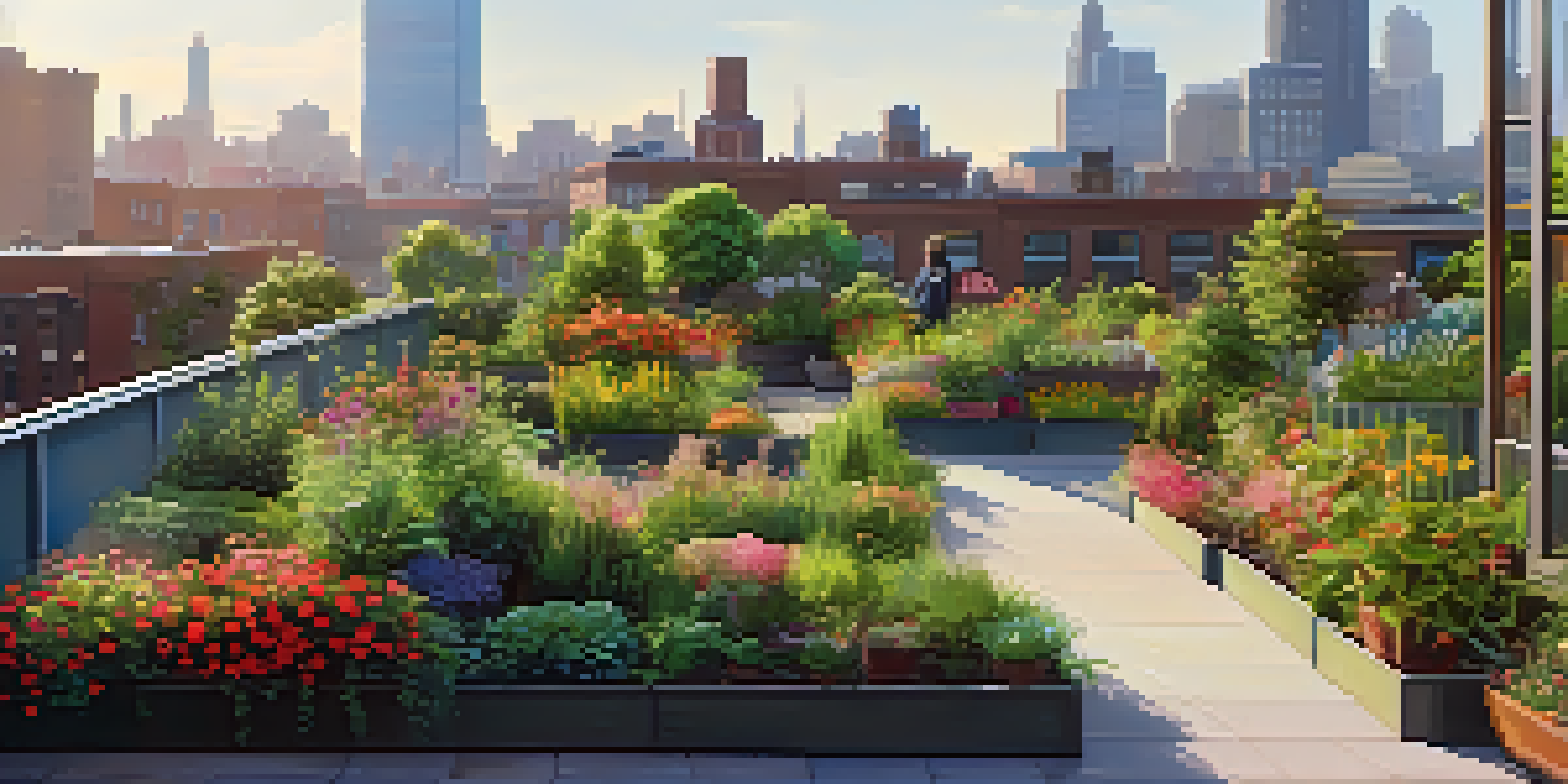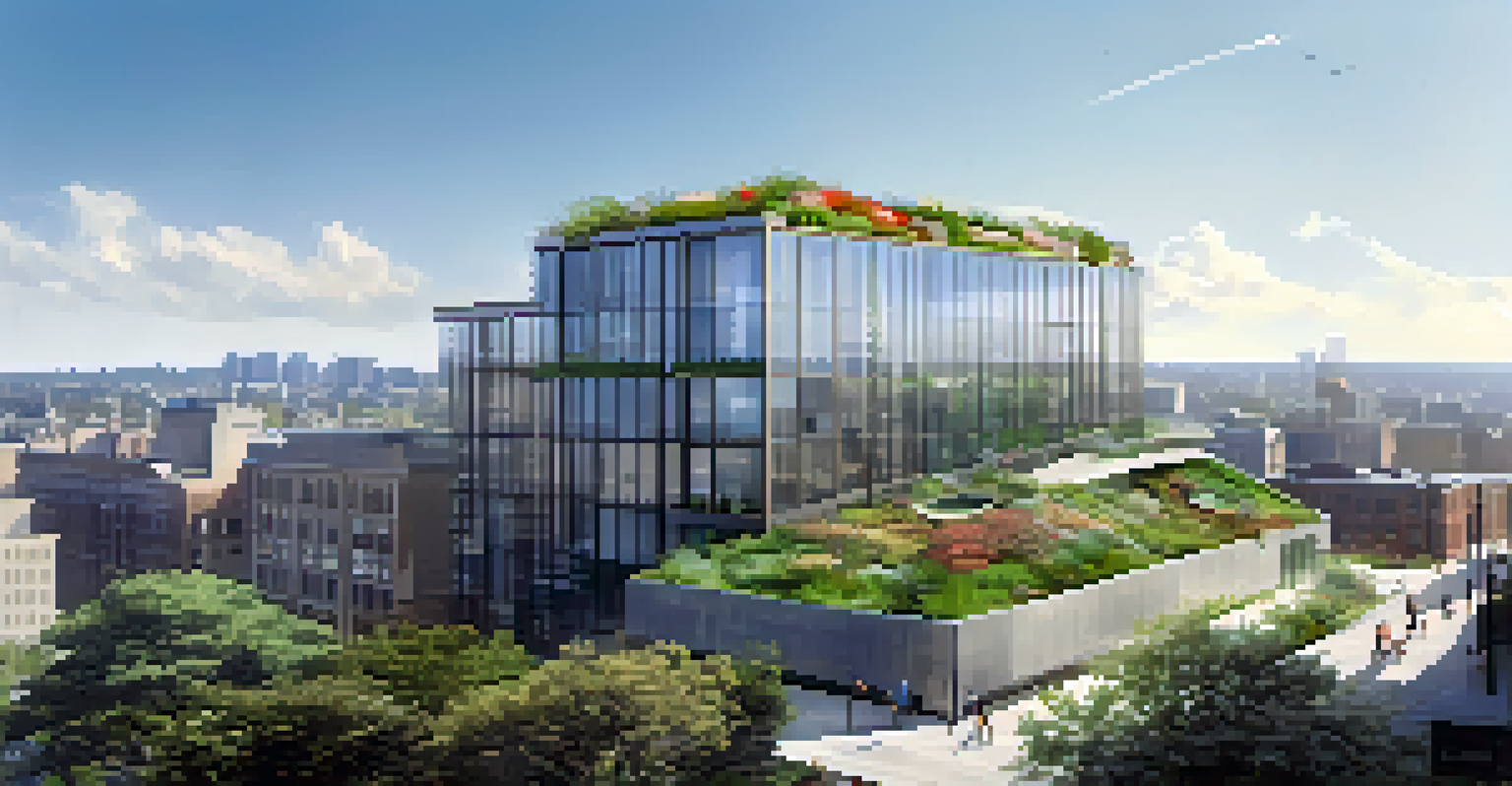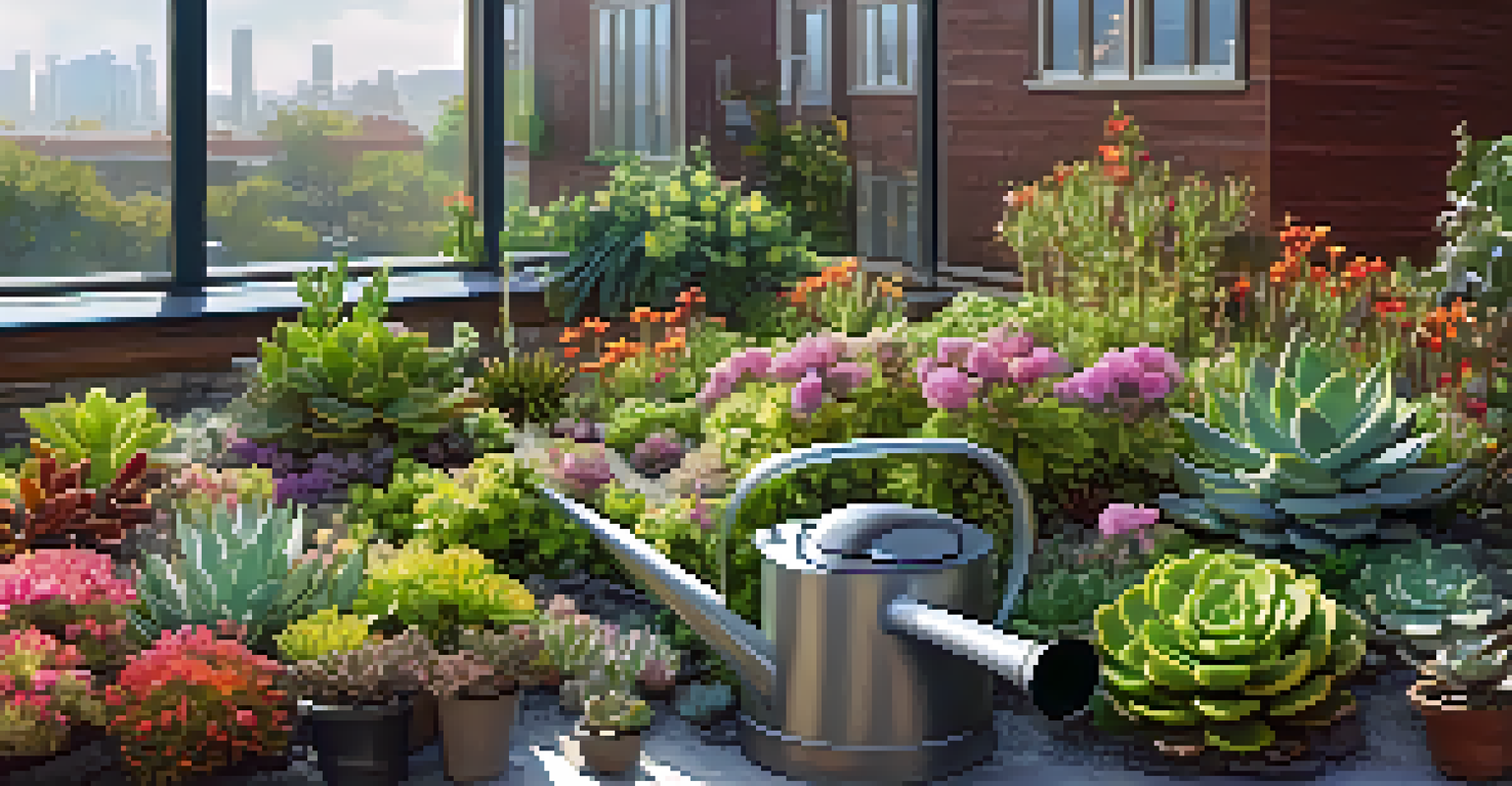The Aesthetic Appeal of Green Roofs in Modern Architecture

Understanding Green Roofs: More Than Just a Trend
Green roofs are essentially gardens on rooftops, transforming concrete jungles into vibrant oases. They come in various forms, including extensive and intensive types, each offering unique benefits and aesthetic qualities. This architectural choice isn't merely a passing trend; it reflects a growing awareness of sustainability and nature's importance in urban settings.
The greening of urban areas is not just about aesthetics, but about creating sustainable environments that enhance our quality of life.
As cities continue to expand, the incorporation of greenery in architecture serves as a critical counterbalance to urban sprawl. The visual appeal of green roofs can significantly enhance the overall look of a building, making it stand out in a sea of monotonous rooftops. Just think of a traditional flat roof versus a lush, green landscape bathed in sunlight—it's a game changer.
Moreover, green roofs contribute to biodiversity by providing habitats for various species, which is essential for sustainable ecosystems. By reintroducing nature into urban areas, we not only beautify our surroundings but also foster a healthier environment for both residents and wildlife.
The Visual Impact of Green Roofs on Urban Landscapes
Imagine walking through a city filled with towering skyscrapers, but then you come across a building with a stunning green roof. This contrast creates a sense of harmony and balance, breaking up the monotony of concrete structures. Green roofs serve as eye-catching focal points that can redefine the skyline of a city.

The lushness of plants, flowers, and grasses can offer a range of colors and textures, making buildings more inviting and less intimidating. They also provide a unique opportunity for architects to play with design elements that promote creativity in urban planning. For instance, sloped green roofs can mimic the natural topography of the surrounding area, further enhancing their aesthetic appeal.
Green Roofs Enhance Urban Beauty
Green roofs transform dull rooftops into vibrant gardens, significantly improving the aesthetic appeal of urban landscapes.
Additionally, the integration of green roofs into public spaces can create a sense of community, inviting people to engage with nature. Rooftop gardens often become social hubs, where people can gather, relax, and enjoy the beauty of their surroundings—all while being elevated above the hustle and bustle of city life.
Sustainability Meets Beauty: The Dual Benefits of Green Roofs
The aesthetic appeal of green roofs is closely tied to their environmental benefits. Not only do they beautify urban areas, but they also help mitigate the heat island effect, reducing temperatures in densely populated cities. This cooling effect can lead to lower energy costs for buildings, making them more sustainable in the long run.
Nature does not hurry, yet everything is accomplished.
Moreover, green roofs play a significant role in stormwater management by absorbing rainwater, which reduces runoff and the risk of flooding. By incorporating greenery into architecture, cities can create more resilient infrastructures that adapt to changing climates. It's a win-win situation: beautiful spaces that serve practical purposes.
The visual allure of these green spaces can also enhance property values, making them an attractive investment for developers and homeowners alike. As more people recognize the dual benefits of aesthetic appeal and sustainability, the demand for green roofs is likely to rise, leading to a greener future for urban landscapes.
Inspiring Examples of Green Roofs Around the World
Several remarkable examples of green roofs exist globally, showcasing the creative potential of this architectural feature. The Bosco Verticale in Milan, Italy, is a stunning example, featuring two residential towers adorned with over 9,000 trees. This vertical forest not only enhances the overall beauty of the city but also contributes to improved air quality.
Another notable example is the High Line in New York City, which transformed an old railway into a lush elevated park. It combines landscape architecture with urban design, making it a beloved destination for both locals and tourists. The green roof concept here is seamlessly integrated into the urban fabric, illustrating how nature can coexist with modern architecture.
Environmental Benefits of Green Roofs
In addition to beautification, green roofs help mitigate the urban heat island effect and manage stormwater, promoting sustainability.
These examples highlight how green roofs can be both functional and aesthetically pleasing, encouraging cities worldwide to embrace this innovative approach to design. As we look to the future, the possibilities for green roofs in architecture are boundless, inspiring us to think creatively about our urban environments.
Design Considerations for Effective Green Roofs
Creating a successful green roof involves careful planning and consideration of various factors. First, the choice of plants is crucial; they should be native, drought-resistant varieties that thrive in the local climate. This not only ensures that the roof remains visually appealing but also minimizes maintenance efforts.
Additionally, the structural integrity of the building must be evaluated to support the added weight of soil and plants. Collaborating with structural engineers and landscape architects can help optimize the design for both aesthetics and functionality. Proper drainage systems are also essential to prevent water pooling and damage to the roof.
Lastly, accessibility should be considered, as rooftop gardens can serve as communal spaces. Designing walkable areas and seating can encourage people to engage with these green spaces, further enhancing their aesthetic appeal. By thoughtfully addressing these design considerations, we can create beautiful green roofs that truly enrich our urban landscapes.
Challenges in Implementing Green Roofs
While the benefits of green roofs are enticing, there are challenges in their implementation that must be acknowledged. One significant hurdle is the initial cost, as establishing a green roof can be more expensive than traditional roofing. However, the long-term savings in energy costs and property value can offset this initial investment.
Maintenance is another consideration; green roofs require regular care to ensure the health of the plants and the functionality of the system. This can involve watering, weeding, and occasionally replacing plants. It's essential for property owners to factor in these ongoing maintenance needs when deciding to install a green roof.
Challenges in Green Roof Implementation
Despite their benefits, green roofs face challenges such as high initial costs and maintenance requirements that must be addressed.
Lastly, regulatory hurdles can complicate the process. Local building codes and zoning laws may not always accommodate green roofs, creating additional obstacles for developers. By advocating for more supportive policies, we can help pave the way for more green roofs in our cities, promoting both sustainability and beauty.
The Future of Green Roofs in Urban Development
As urbanization continues to rise, the future of green roofs looks promising. More cities are recognizing the importance of integrating nature into their architectural landscapes, leading to increased demand for green roofs. This trend not only enhances the aesthetic appeal of buildings but also addresses critical environmental issues.
Innovative technologies are emerging to simplify the installation and maintenance of green roofs, making them more accessible to a broader audience. Modular green roof systems, for instance, allow for easier assembly and customization, providing opportunities for both residential and commercial properties. These advancements can encourage more developers to embrace green roofs.

In conclusion, the aesthetic appeal of green roofs is just the tip of the iceberg. As we move forward, it’s crucial to continue promoting these green spaces as essential components of modern architecture, ensuring that they become a staple in creating sustainable, beautiful urban environments for future generations.